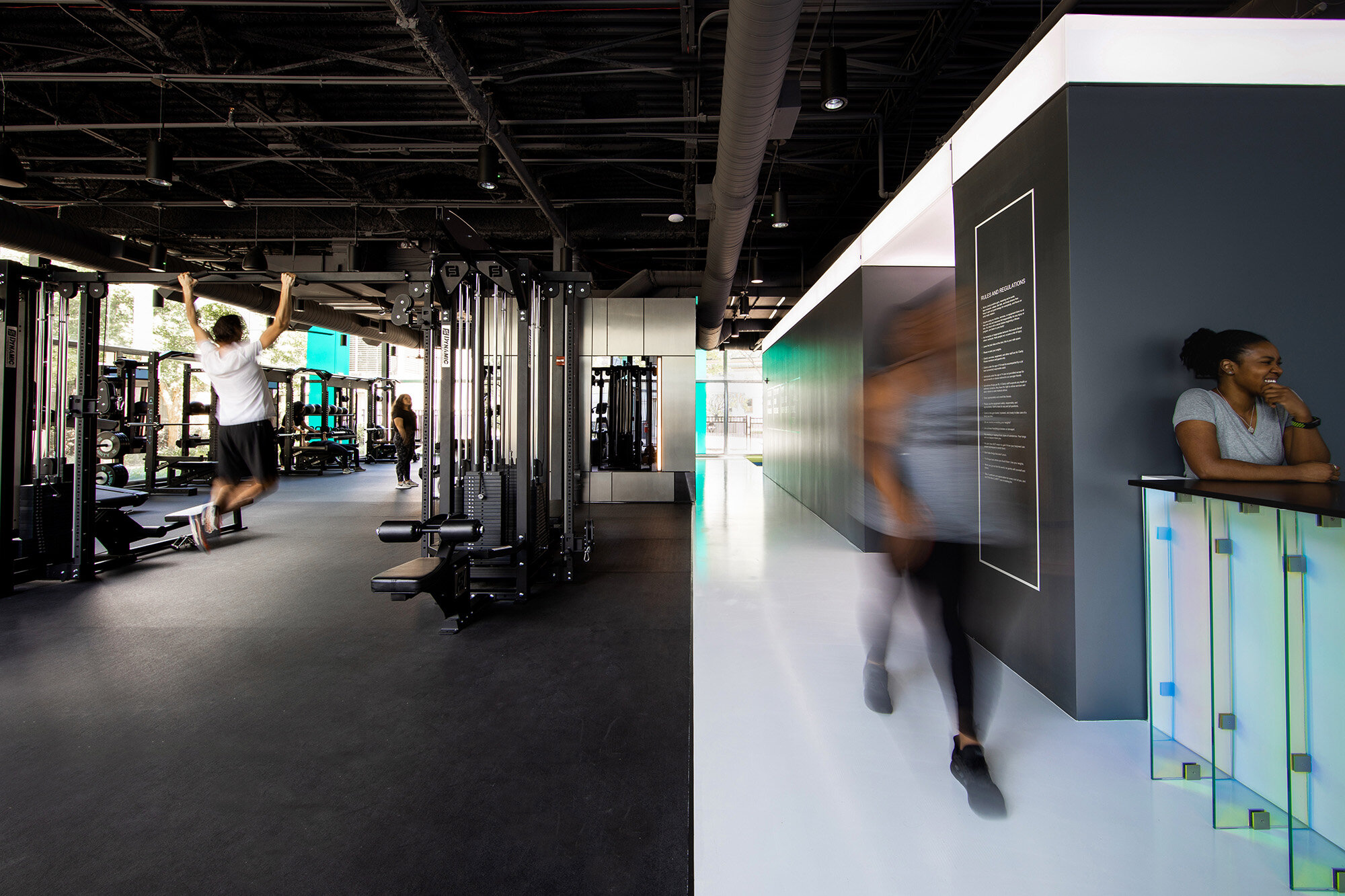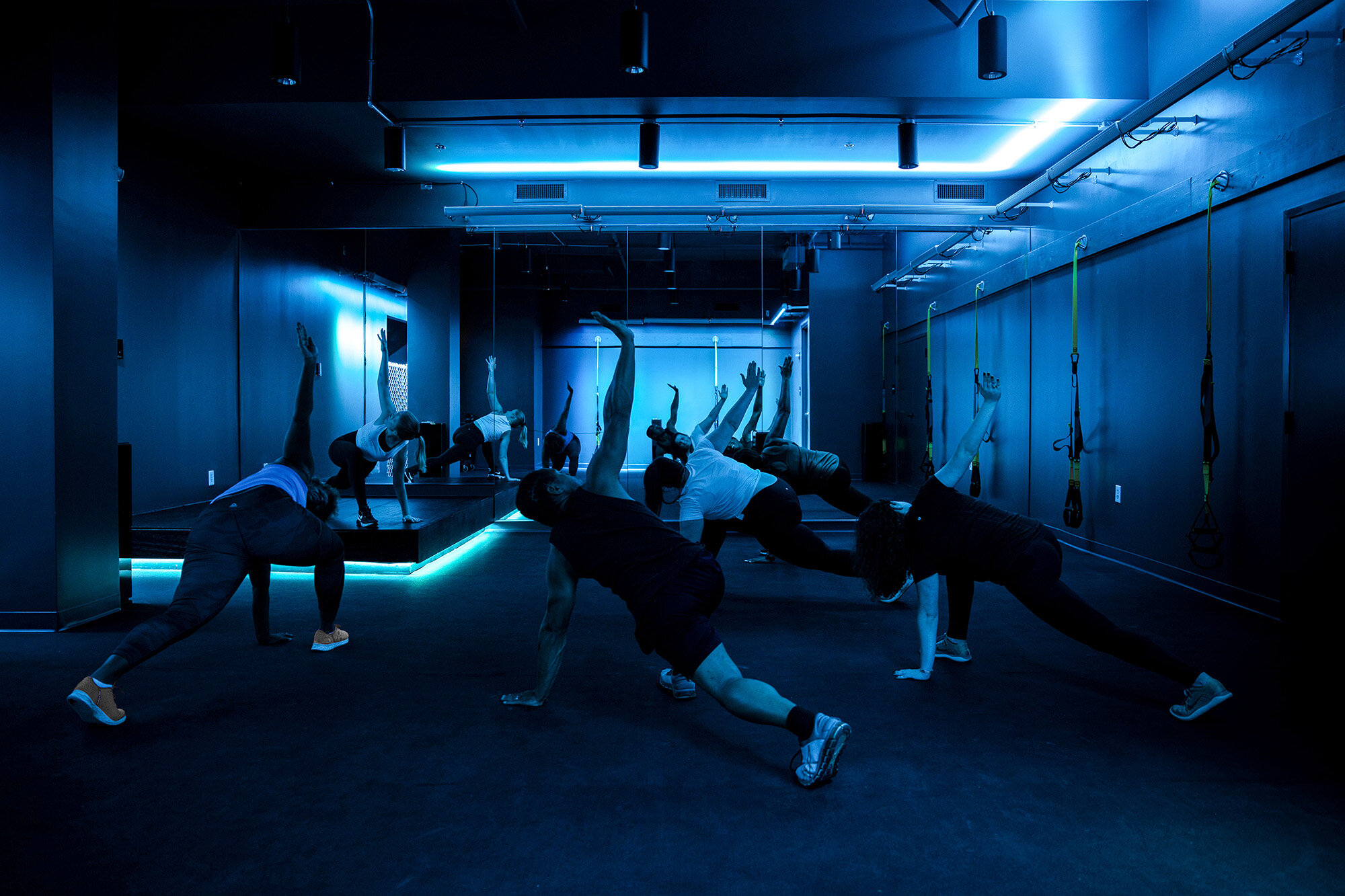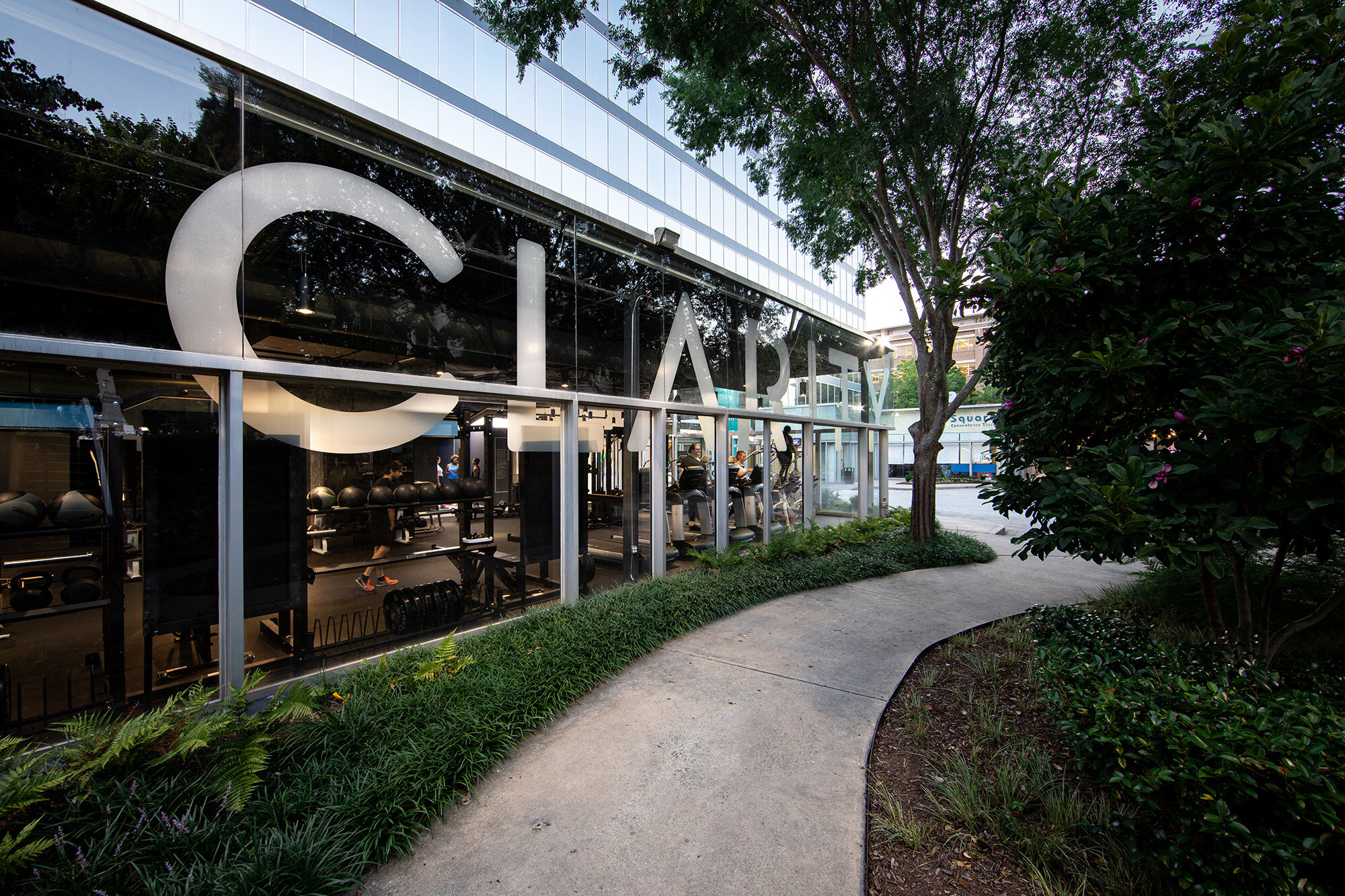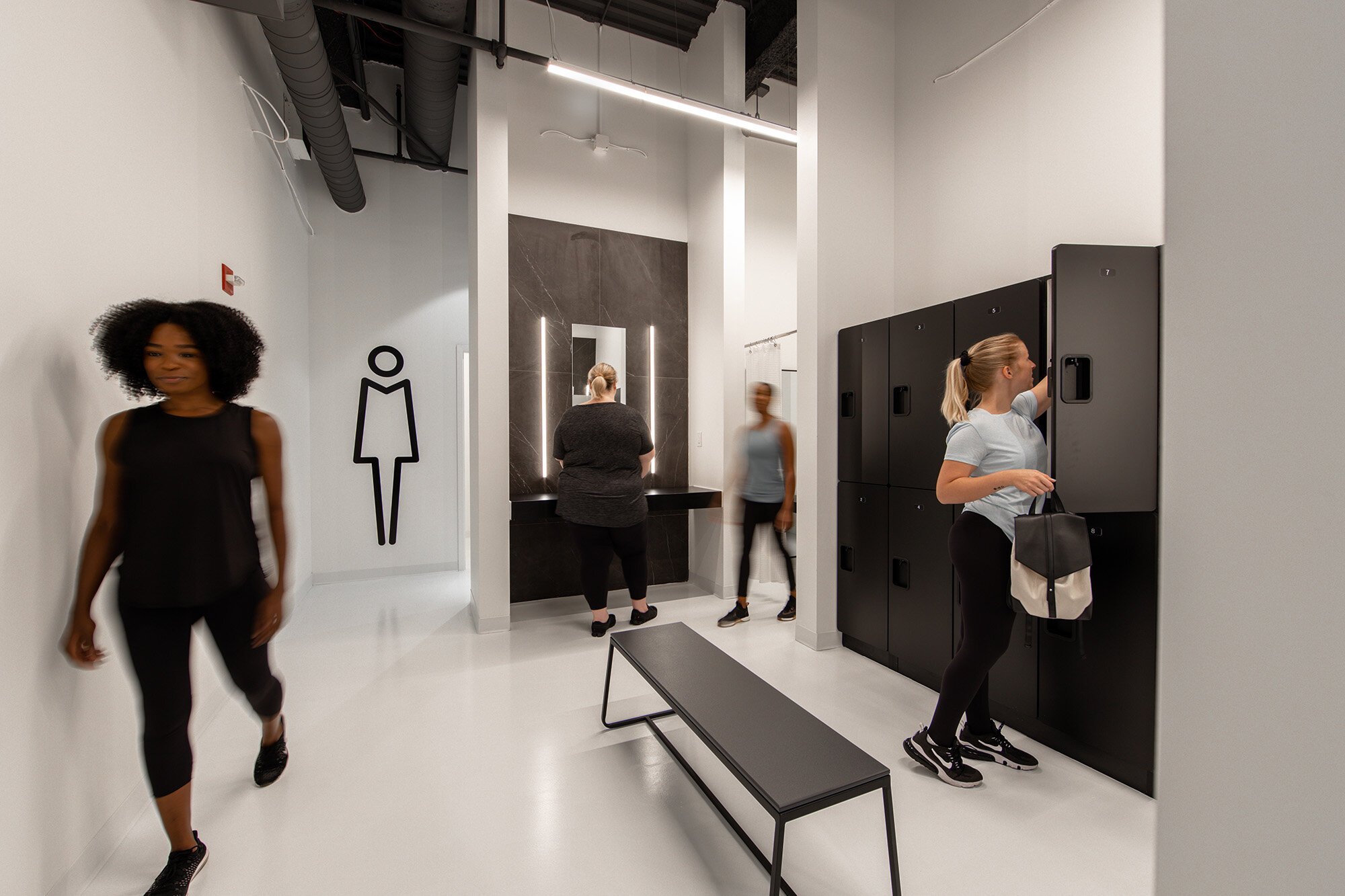Clarity is home to a culture of holistic health.
Photography by Aaron Schorch
The first gym in Georgia designed to foster body-positivity has opened in Decatur. Clarity Fitness is specifically designed to put the focus on exercise in an energizing, supportive, and comfortable environment.
Clarity represents a shift in thinking about physical fitness - away from unhealthy approaches like obsessing over weight loss or muscle building, toward celebrating and caring for your body as it is today. This allows health to flourish in bodies of all shapes, sizes, and abilities.
“Health” is often viewed as a self-explanatory concept, but some people may struggle to understand what the term means for themselves. Health-related attitudes are affected by upbringing, advertisements, social media, and individual circumstances, among other influences. And contrary to popular belief, health is not something that can be addressed by certain activities at certain times. Being healthy means living a lifestyle that encompasses physical, mental, social, spiritual aspects of life. Likewise, many factors affect the quality of our health, and the spaces in which we spend our time play an important role by setting a stage for engaging in health promoting activities.
“Cognitive Design is exactly what my gym, Clarity Fitness, needed to go above and beyond expectations. A huge cornerstone to my business is the experience and clarity people feel from the second they come through the doors, to the moment they leave. Without tying the message and mission of my business to the architecture of the space, I don’t feel we would be as successful as we are today. Every time someone comes to the gym the first expression is how beautiful the space is, and we can’t thank them enough!”
Abbey Griffith
Owner, Clarity Fitness
Shared Experience
Clarity is a gym where everyone is welcomed into a supportive community. A person’s sense of being included in, and belonging to, a group is strengthened by shared experiences, which may include a Bodyweight Bootcamp or Stretch + Refresh class, a meaningful conversation with a personal trainer, or getting to know a new friend in a safe and supportive environment. Shared experiences, such as these, contribute to shared identities and values between people from diverse backgrounds [1] [2] [3].
Space is divided into a number of distinct areas, each with a unique character, creating a variety of novel shared experiences, and opportunities for social connections.
To complement the traditional male and female locker rooms, a third Shared Lockers room was created. For the majority of people who don’t change clothes or shower at the gym, the Shared Lockers create an opportunity to continue conversations after exercising that would typically end (or change dynamics) when entering the locker rooms, a time in which people are most naturally primed to socialize. This space is open to the lobby and emblazoned with a display of bathroom scales - smashed, burnt, and shot - conveying without words your weight is not your worth.
Body Image
Clarity engages a supportive community that provides information and education regarding a range of health issues, including eating disorders and body image concerns. For example, several factors can impact body awareness - and the overall experience of exercise.
Mirrors are a universal feature of gyms, but the impact of mirrors in gyms is far from universal.
Mirrors are a useful tool for some people, but their effectiveness varies from person to person and is influenced by context [4] [5] [6]. For these reasons, we limited the use of mirrors to locations where they are most necessary for safety while exercising and employed gray mirrors, which are fully functional for observing form, but not for scrutinizing body image. With this strategy, we minimize prompts for self-consciousness and fear of being judged [6] and promote body awareness [7].
Dignity
Regardless of a member’s background, dignity and self worth are essential to an empowered and welcoming gym experience. In many cases, both the source and the subject of the stigma involve thoughts, beliefs, and attributions that result in the blaming and shaming of people suffering from a range of health problems [8] [9].
Positive messaging throughout demonstrates that Clarity is a comfortable place of healing and self-acceptance.
Additionally, this is further translated to the built environment both by providing spaces for a range of educational experiences - be it a one on one conversation with a trainer or a special event that lets someone know they are not alone. Additionally, individual private changing areas within male and female locker rooms provide a private option for changing clothes for those who prefer this option for social, cultural, or religious reasons.
Motivation
Finding the right motivation - one that drives a person towards their goal – can be the impetus for sustained positive and healthy behaviors. Clarity focuses on promoting positive shared experiences among its members, as a strategy to promote healthy mutual relationships [2].
The whole gym is designed to facilitate social cohesion, which can promote positive perception of exercising and enjoyment of the exercise experience [10].
People’s motivations differ in accordance with their health goals and Clarity’s variety of distinct spaces to address individual needs and preferences. The open exercise room and turf track are great places for positive peer pressure to excel; awareness of others exercising can even enhance one’s own motivation [11, 12]. Private Training rooms and a dynamic Team Room provide different opportunities for exercise in a more focused and intense setting. These options allow members to rotate through different areas on different days to meet their unique and changing needs over time.
Community Engagement
Community engagement happens at Clarity on multiple levels - among members and with the broader Decatur and Atlanta communities. Configuration of exercise areas purposefully creates niches for conversation, where members can step aside and talk without feeling hurried or in the way of others. And in addition to exercise activities, Clarity was designed to also host non-exercise events, such as meetings for educational events and social support groups on topics such as eating and exercise. Special events can be held in the open and day lit Lobby with high visual connectivity to the outside, or within the enclosed and private Team Room.
Credits
Architecture, Interior Design, and Furnishings by Cognitive Design
Environmental Graphics by Lorenc Design
Clarity Branding by Handshake Union
MEPFP Engineering by Covalent Consulting
Lighting Design Consulting by Critical Components, Inc
Acoustical Engineering by Conway & Owen
Sign and Environmental Graphics Fabrication by Option Signs & Environmental Graphics
Millwork by Powers Building Solutions
Photography by Aaron Scorch Photography
References
Georgia Institute of Technology BEPHC. (n.d.). Social Cohesion. Retrieved April 10, 2019, from http://www.bephc.gatech.edu/glossary/social‐cohesion
Bastian, B., Jetten, J., & Ferris, L. J. (2014). Pain as social glue: Shared pain increases cooperation. Psychological science, 25(11), 2079‐2085.
Farrance, C., Tsofliou, F., & Clark, C. (2016). Adherence to community‐based group exercise interventions for older people: A mixed‐methods systematic review. Preventive Medicine, 87, 155‐166.
Windheim, K., Veale, D., & Anson, M. (2011). Mirror gazing in body dysmorphic disorder and healthy controls: Effects of duration of gazing. Behaviour research and therapy, 49(9), 555-564.
Rogers, K. A., & Ebbeck, V. (2016). Experiences among women with shame and selfcompassion in cardio‐based exercise classes. Qualitative Research in Sport, Exercise and Health, 8(1), 21‐44.
Martin Ginis, K. A., Jung, M. E., & Gauvin, L. (2003). To see or not to see: Effects of exercising in mirrored environments on sedentary women's feeling states and self-efficacy. Health Psychology, 22(4), 354.
Mehling, W.E., Wrubel, J., Daubenmier, J.J. et al. Body Awareness: a phenomenological inquiry into the common ground of mind-body therapies. Philos Ethics Humanit Med 6, 6 (2011). https://doi.org/10.1186/1747-5341-6-6
Crisafulli, M. A., Von Holle, A., & Bulik, C. M. (2008). Attitudes towards anorexia nervosa: The impact of framing on blame and stigma. International Journal of Eating Disorders, 41(4), 333-339.
Khan, S. S., Tarrant, M., Weston, D., Shah, P., & Farrow, C. (2018). Can Raising Awareness about the Psychological Causes of Obesity Reduce Obesity Stigma?. Health communication, 33(5), 585-592.
Moussaïd, M., Kämmer, J., Analytis, P., & Neth, H. (2013). Social Influence and the Collective Dynamics of Opinion Formation. PloS one. 8. e78433. 10.1371/journal.pone.0078433.
Carnes, A. J., Petersen, J. L., & Barkley, J. E. (2016). Effect of peer influence on exercise behavior and enjoyment in recreational runners. The Journal of Strength & Conditioning Research, 30(2), 497-503.
Murcia, J. A. M., de San Román, M. L., Galindo, C. M., Alonso, N., & González-Cutre, D. (2008). Peers’ influence on exercise enjoyment: A self-determination theory approach. Journal of sports science & medicine, 7(1), 23.













